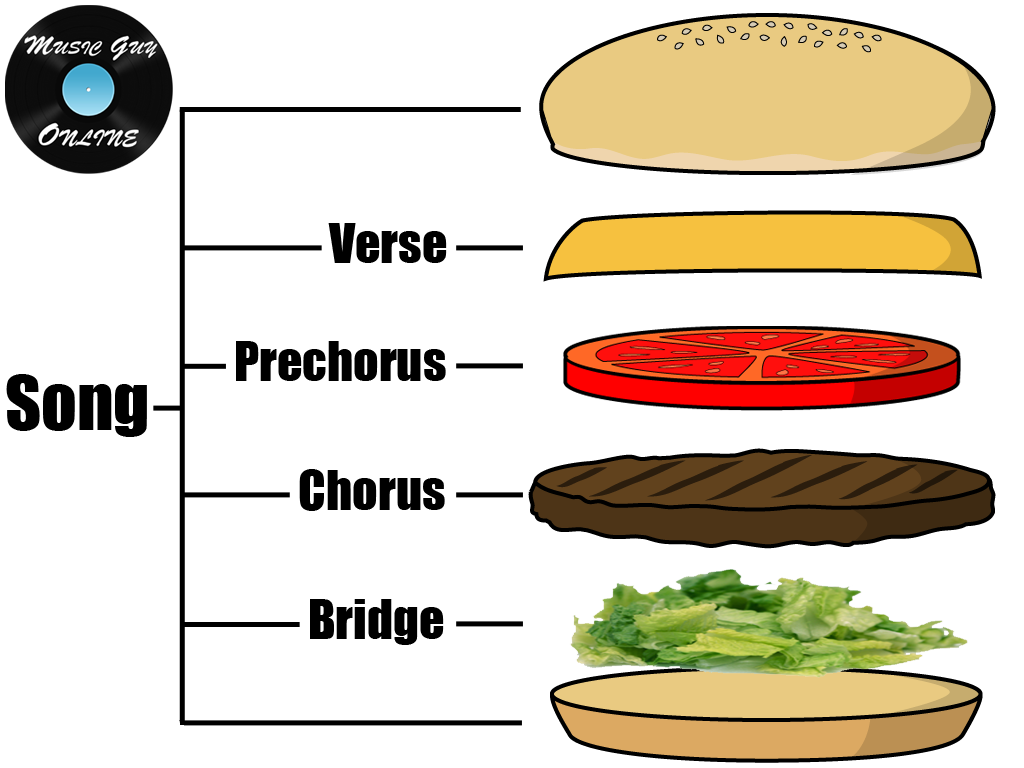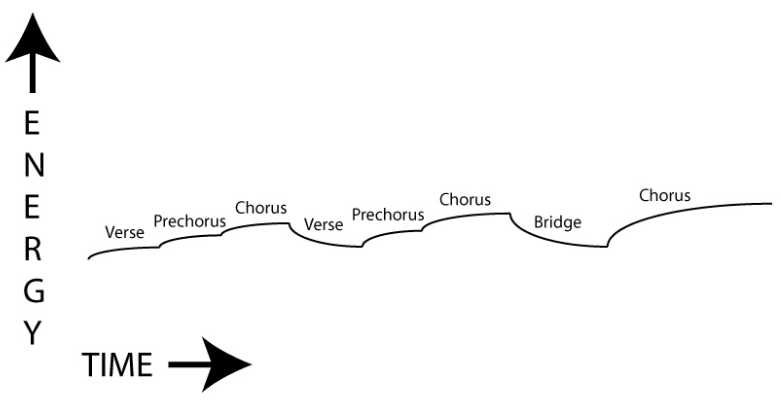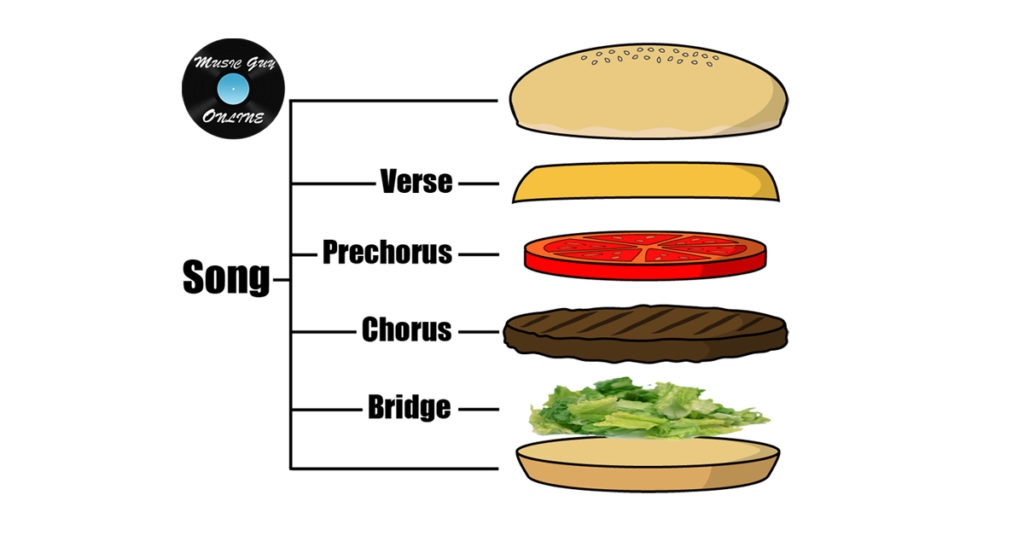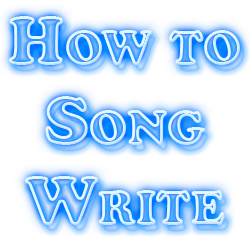While the sound and style of the most popular music has changed dramatically from decade to decade, one thing which has never gone out of style is the importance of a chorus in a song.
In fact, if you listen to the top ten hits from one year or even one decade to the next, the only thing which is always consistent is the presence of memorable choruses.
It’s the most important part of a song, so let’s do a complete breakdown of what is a chorus in a song to identify what it is and what makes it the one essential ingredient.
What is a Chorus in a Song?
First, let’s define what is a chorus in a song.
Simply put, the chorus is the most important part and moment in a song. It’s the part of the song which repeats, typically three or more times.
Think of your favorite song. If someone asked you to sing it right now, odds are the part you’d sing would be the chorus. This is the most identifiable moment of virtually any song; the main part of its identity.
The other parts which make up a song like a verse, prechorus, bridge, etc. – these all exist to create anticipation and support for the moment in which that chorus hits to make it all the more memorable.
This chorus is typically where the main lyric and catchiest melody are delivered to add to its impact.
You can think of the chorus as the patty on a hamburger; it’s the central ingredient which makes a hamburger a hamburger. The other ingredients add to the flavor, but the patty is why you’re eating it. A song functions in the same way:

Music in the Chorus
Musically, in the chorus, the song is hitting its peak as the catchiest melody is being delivered through the instruments and vocals of the song.
You’ll often hear a catchy melody referred to as a “hook”, because its purpose is to draw people into the song.
While you might think a complicated or more sophisticated melody which hits a lot of notes in a very pleasing order would make for the best kind of hook, oftentimes it’s the simplest melodies which appeal to the greatest audience because of how easy they are to repeat or get stuck in your head.
Many times songwriters will utilize more complicated melodies in the verse and prechorus before delivering a comparatively simpler melody in the chorus because of the effective contrast it makes for the listener.
In the same vein, songwriters will also sometimes intentionally create less memorable melodies in the preceding sections before hitting hard with a very catchy hook/melody in that chorus to make it sound even bigger and better by comparison.
Keeping the listener subconsciously engaged by varying up different types of melodies keeps them invested in the song throughout.
This is one of the most important rules in music which applies all the way through music production in recording and mixing a song, as well, but it all starts with songwriting.
Chorus Lyrics
The chorus lyrics are where the main theme or message of the song which the singer wants to convey is delivered.
Similar to the music of a chorus, the chorus lyrics are often simplified to make for a more memorable delivery.
In going back to the hamburger metaphor, the lyrics of the verse and prechorus provide context and support, existing to make the eventual delivery of that main message that is the chorus lyrics all the more impactful.
The title of the song itself is often (but not always) delivered as part of the chorus lyrics.
In some cases, the only lyrics of the chorus are those of the title of the song (I’ll be giving an example of this in a moment).
What is the Chorus In a Song Example
The best way to identify what is a chorus in a song is to point out a few of the most famous choruses of all time.
I’ve included examples from the last 5 decades (note that each song will start playing immediately at the chorus in each example’s video).
Whitney Houston – I Will Always Love You
One of the biggest songs of the 90’s is also a quintessential example of what is a chorus in a song.
Dolly Parton originally penned and performed the song in the early 70’s, but it was Houston’s powerful rendition of it which made it a megahit almost 20 years later.
This is also an example of a chorus in which the chorus lyric is made up ENTIRELY of the title of the song itself:
Michael Jackson – Billie Jean
The King of Pop was on top of the world in the 80’s thanks to a string of huge hits, arguably the biggest of which was Billie Jean.
Billie Jean is a masterclass in lyric writing, particularly in how the story develops with each progressing section of the song.
The opening verse tell the story of a woman who sets her sights on the reluctant narrator before in the prechorus he recalls advice to be wary in his relationships.
A lot is hinted at as the listener is forced to make up their inferences as to what’s going on up until the moment the chorus.
This makes the bluntness of that famous chorus lyric so impactful “Billy Jean is not my lover she’s just a girl who claims that I am the one, but the kid is not my son.”
Musically, in addition to a huge melody on that chorus, Jackson introduces several other voices including a harmony for the first time on that chorus, making it seem so much larger than the sections which preceded it:
Gotye (With Kimbra) – Somebody That I Used to Know
Gotye came out of nowhere with his 2011 minimal art pop hit “Somebody That I Used to Know” that sent him to the top of the charts and drew favorable comparisons to the music of 1980’s hitmakers The Police and its singer Sting.
The chorus succeeds in equal parts due to a great vocal melody but also because the contrast and large jump in energy from its preceding verse (something we touched on earlier).
Gotye sings that first verse an octave lower through a moody whisper. As a listener, we get accustomed to that lower register Gotye sings that first verse in. It establishes our expectations of what his voice can (or better said, will) do and what we can expect as we continue listening to the song.
This is why we are “wowed” once that chorus hits and he jumps up an octave to belt out the emotional lyrical message.
Note that it’s not just the musical notes themselves that have changed, but the timbre of his voice has shifted considerably as he’s now crying out, putting so much palpable emotion behind his pleas to the other narrator.
To say the least, it’s a very satisfying contrast which pleasantly surprises the listener from one section of the song into the chorus.
Lyrically, the verses reflect on a previous relationship, each from the two narrator’s different perspectives. It’s the chorus that gets to the heart of how the narrator really feels about it.
Incidentally the inclusion of that second narrator in the form of Kimbra to tell the other side of the story in the wake of that first chorus makes the message all the more fascinating, giving that chorus a somewhat different meaning when it comes back around the second time:
Outkast – Hey Ya!
Outkast’s “Hey Ya!” was a a smash hit genre blender with flavors of 1950’s and 60’s pop, but one which felt completely fresh upon its release in 2003.
It’s another example of how simplicity reigns supreme in writing a great chorus (not to mention another example where the chorus lyric is the song’s title itself, in this case just two words).
The verses going into its chorus are comparatively much busier and complicated vocally before it opens things up and we sail into the famous 2-3 sustained note melody of that chorus.
Add in a simple yet toe-tapping drum beat (with claps) and repeating 4 chord bass progression along with some ear candy in the form of a child’s toy-like xylophone which plays a few notes off of the timing of the vocal melody, and you’ve got a bonafide earworm:
Bee Gees – Stayin’ Alive
The Bee Gees had the biggest hit of the short-lived disco era of the late 70’s with “Stayin’ Alive”.
The chorus of Stayin’ Alive is interesting because it actually initially resets the energy of the prechorus and relies on a low key yet catchy groove driven melody with its “whether you’re a brother or whether you’re a mother you’re stayin’ alive”.
This works well, because it gives them a chance to begin building within the context of the chorus itself as the second half gets bigger for the “ah ha ha ha stayin’ alive” lyric and melody. It’s yet another example of how simplicity can yield the biggest choruses both lyrically and musically.
Stayin’ Alive also has a great example of a post chorus in a song with the holding of the “alive” lyric to transition back into the verse or next section of the song:
Does a Song Have to Have a Chorus
With all of this talk about choruses, a fair question is does a song have to have a chorus?
The answer is absolutely no; in fact there are a lot of artists who shrug off songwriting conventions and write with a more open ended method where the song goes wherever it feels right.
In the context of singles on the other hand, or songs which artists release to get airplay and chart, it’s incredibly rare for a song to not have a chorus.
A famous example of a song which doesn’t have a chorus is Queen’s “Bohemian Rhapsody”. It’s a nearly 6 minute roller coaster ride, navigating between a capella, ballad, and head banging rock.
Despite now being one of the most famous songs of all time, ironically the song received mixed criticism and under-performed particularly in America when it was first released in 1975. The song mostly enjoyed cult success until it re-entered the mainstream thanks to its inclusion in a scene in the film Wayne’s World in 1992, and the song gained a second life, catapulting it into the practically larger-than-life reputation it has today.
So to again answer the question does a song have to have a chorus, it certainly does not.
That said, roughly 99% of the most popular songs of all time follow a more conventional song structure and are all built around a chorus.
How Long is a Chorus in a Song
Regarding how long is a chorus in a song, there are no hard and fast rules on length itself.
Instead, a chorus’ length should be long enough to be satisfying but not so long to overstay its welcome. The last thing you want is for the listener to get bored of the chorus (or any part of the song) at any point.
Speaking of how long is a chorus in a song, a nice mechanic to use is putting an abbreviated or shortened version of the chorus the first time it hits. This way you’re teasing that huge hook by just giving the listener a quick taste before you go back to the verse.
This leaves them wanting more so that when the full version hits on the second chorus, it’s both surprising and more satisfying.
What is the Difference Between Verse and Chorus
To again talk about the importance of dynamics in songwriting, it’s critical to know the difference between a verse and a chorus.
Lyrically, the verse is for developing the context of the song for the listener so that the chorus is more impactful for them.
Musically, we typically want to keep the energy level lowest at that verse so that the only direction we can go is up:

As this illustration (taken from my 100+ page eBook on how to write a song) demonstrates, we want to keep the energy level lowest on the verse so that the contrast during the chorus when the energy tops off is really felt by the listener.
A lot of this is done in the actual music production of the song, but on a songwriting level we can keep the energy level lower by utilizing less memorable (by comparison to the chorus) melodies.
Note that less memorable doesn’t mean bad or not catchy, it’s just in comparison to the chorus.
As mentioned before, we can also use a more complicated melody with more lyrics before we open things up in that chorus with a more simplified melody.
What is a Prechorus
A prechorus is the section of the song which follows a verse and precedes the chorus. It has a unique melody which is separate from the verse and oftentimes uses different chords and a different intensity from the verse.
Note that not every song uses or even needs a prechorus.
The two more “necessary” elements of a song are the verse and the chorus. Sometimes those two alone work well enough together that you don’t need anything else.
In Outkast’s “Hey Ya” which I talked about earlier, there’s no prechorus before that first chorus. It goes straight from 4 verse lines into the chorus.
Because everything revolves around the chorus as I’ve said, you can determine whether or not you need a prechorus by sensing if going into the chorus from a verse alone is good enough.
Sometimes you need to build more tension and anticipation for that chorus, and a prechorus works well for that.
Similarly, sometimes going straight from the verse you have into the chorus just doesn’t sound right. In this case, you need a piece to connect the two which the prechorus works well for, as well.
What is a Post Chorus in a Song
A post chorus in a song is a section which acts as a variation on a chorus, immediately following that section in a song. Compared to a prechorus, the post chorus is more of a rarity in pop music.
One of my favorite songs from Vegas-based indie rockers The Killers is “This River is Wild”. It uses a lot of the various mechanics we’ve talked about in this article, including variations on the presentation of the chorus, and it includes a very nice post chorus, as well.
After that second chorus, they introduce a post chorus for the first time in the song in which the title lyric is delivered.
The second chorus is different from the other choruses in that it really tamps down on the energy. This makes the huge hook and energy in that post chorus all the more effective. Note that in the video I have it begin on that second chorus so you can feel that transition.
How Many Chorus in a Song
Another common question is how many chorus in a song, and again, there’s no hard or fast rule.
The norm in a standard pop song format is three choruses:

Sometimes you’ll get a fourth chorus with the most common placement either being at the beginning of the song (as an opener) or doubling up that final chorus.
It’s once again about what feels right for the song. You don’t want that chorus to overstay its welcome, and that applies equally to number of appearances as well as length itself.
Where is the Chorus in a Song
Regarding where the chorus in a song is, it varies from song to song as you could hear in the examples we gave earlier. Some songs open up with the chorus, others make you wait a very long time to build the anticipation as much as possible.
Journey’s “Any Way You Want It” is an example of a song which opens on its hook to suck you in from the start.
Alternatively, Elton John’s “Tiny Dancer” puts you through its intro, two or three long verses and prechoruses, an instrumental break, and another unique prechorus before FINALLY hitting that chorus nearly 3 minutes in.
That’s probably why it wasn’t much of a hit when it was first released. Much like “Bohemian Rhapsody”, though, it became a cult classic and got the recognition it deserved much later in its life:
What is a Song With No Chorus Called
While there are a lot of terms to describe song compositions, there’s no specific term regarding what is a song with no chorus called.
How to Write a Chorus to a Song
The secret to how to write a chorus to a song is the same secret for how to write a huge hook. They are essentially one and the same.
If you can write a huge hook, you can write a chorus to a song.
I’ve put together my complete method on how to write a song, so check that out for the simplified method for writing the perfect song from scratch.




